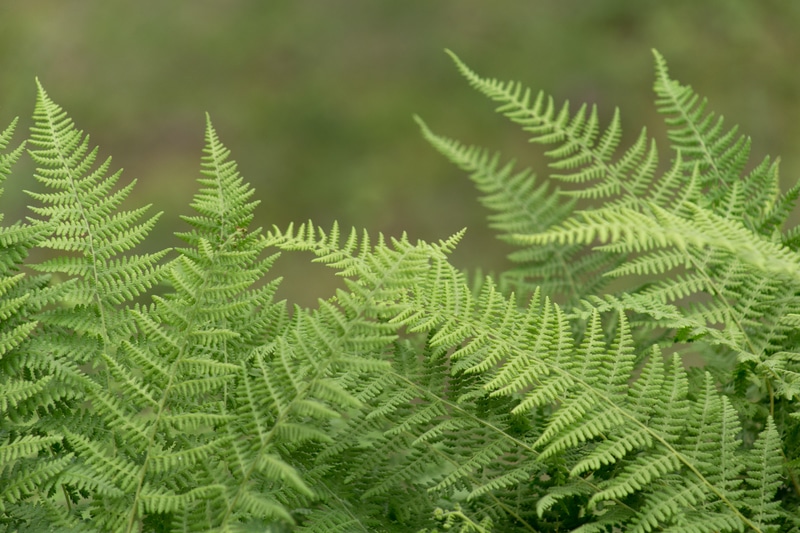It only takes three steps to learn how to split ferns. Because they are long-lived, you must know this primary maintenance practice to prevent overcrowding and use this as an opportunity to produce more plants. Splitting ferns are an excellent way to keep a tidy garden and propagate more plants to sell or replant.
You might also benefit if you start growing ferns in the greenhouse. Starting plants in a stable environment such as the greenhouse minimizes the chances of drawbacks. More so, ferns make excellent indoor plants, and maintenance is not complicated. They are generally easy to grow, even from the new divisions you’ve created from splitting a mature plant.

Comprehensive Guide On How To Split Ferns
Step #1. Digging
Watering the soil
The first step in splitting ferns is digging them out of the soil. A useful technique to remember is watering the soil for at least two days before you intend to dig. This makes it easier to get them out of the ground, and it also prevents stress on the plant when you divide them.
Remember that your fern must be healthy before digging it up, and this includes ensuring that it is well-hydrated. The root system of freshly divided ferns will still need one to two weeks to establish, so you want them to absorb moisture well before digging. Those who grow ferns in the greenhouse can check the conditions if they are stable to keep the plants healthy.
Lifting off from the ground
The best time to split ferns is early in spring, right before new growth. Use a shovel to dig around the fern at least 6 inches away to avoid damaging its roots. Once you have gone around the plant, lift the fern gently with the tip of the shovel.
Some gardeners also divide the plant in half before sliding the shovel under the roots and lifting it. It’s best to raise the roots with soil still attached. In general, you shouldn’t have to dig deep because ferns have shallow roots.
Sliding out of the container
What about container ferns? The plant should slide out easily, so hold it at the base and tip the container upside down. You can also loosen it by tapping the pot at the edge of a table.
Step #2. Dividing
The second step is dividing the fern itself. As mentioned earlier, you can divide the plant in half before lifting it off the ground. If you have a potted fern, it’s better to split it after removing it from the container.
Just be gentle in taking it off to avoid damaging the roots.
Rinsing
However, you want to determine your plant’s root system before dividing it to ensure that you won’t damage its structure. Remove the roots’ soil by rinsing it under a faucet that provides a low stream of water. More so, remove the dead parts and other remnants to make sectioning easier.
Determining the root system
Ferns have three root system types, and they are rhizomatous, clumping, and spreading. Rhizomatous ferns have a thick structure with small fibrous roots. On the other hand, clumping ferns are all fine fibrous roots growing from the center compared to spreading ferns with fibrous roots from the entire underside.
Sectioning
Divide the rhizomatous root system so that each section has one rhizome and enough roots and leaves. A clumping fern will then require sectioning through the crown so that each piece has some part of it with roots and leaves. Lastly, you can divide a spreading fern by hand, but ensure that each section has enough roots and cut those connecting if necessary.
Step #3. Planting
Once you have the divisions, aim to plant them immediately because they can dry reasonably quickly. You should also avoid using sections that show signs of diseases and damages, ranging from mushy rhizomatous ferns and dead centers of clumping ferns. Only use healthy divisions and water them generously upon planting.
Ensure moisture
You can use a greenhouse for starting fern divisions to avoid fluctuating weather conditions. And to ensure the establishment, you want to provide soil moisture consistently. Gardeners often water the medium until it drains to help with moisture retention but regularly check the surface to keep it from drying.
Since it can take the split ferns to take a month to fully get established, you can mist them daily to help the roots recover. It’s best to do this every morning to prevent rot and mildew by allowing the plants to dry completely before the cold temperatures in the morning. You can also check for signs of overwatering and underwatering daily.
Conclusion
Maintenance and propagation of ferns are easy to achieve with one single practice. Knowing how to split ferns will let you divide these plants without drawbacks and get new planting sections. However, it’s crucial to identify the root system of your fern to split it correctly.
Ferns can have rhizomatous, clumping, and spreading root systems. The latter two are easy to get confused by, but spreading root systems will have fibrous roots growing from the entire underside and not just the center. Regardless of your fern’s root system, it’s crucial to remove any damaged or mushy parts and ensure that each section has enough foliage and roots to develop.
After splitting, you must ensure soil moisture to help them establish themselves. This is also why it’s essential to water the plant before you intend to dig it out of the soil. Afterward, you shouldn’t have any problems with growing the new sections.
